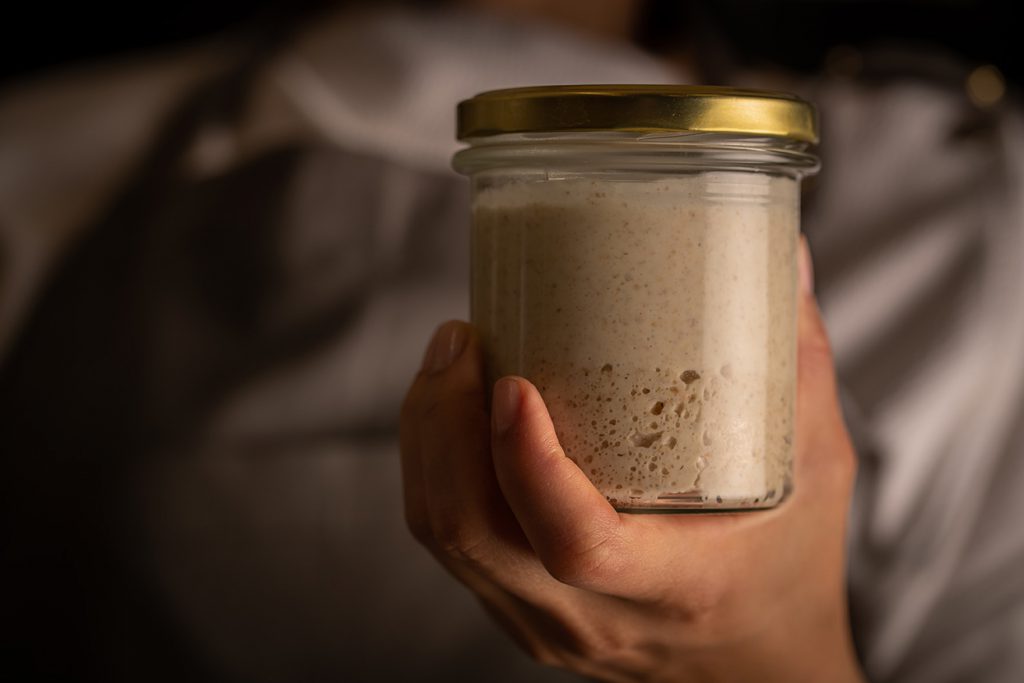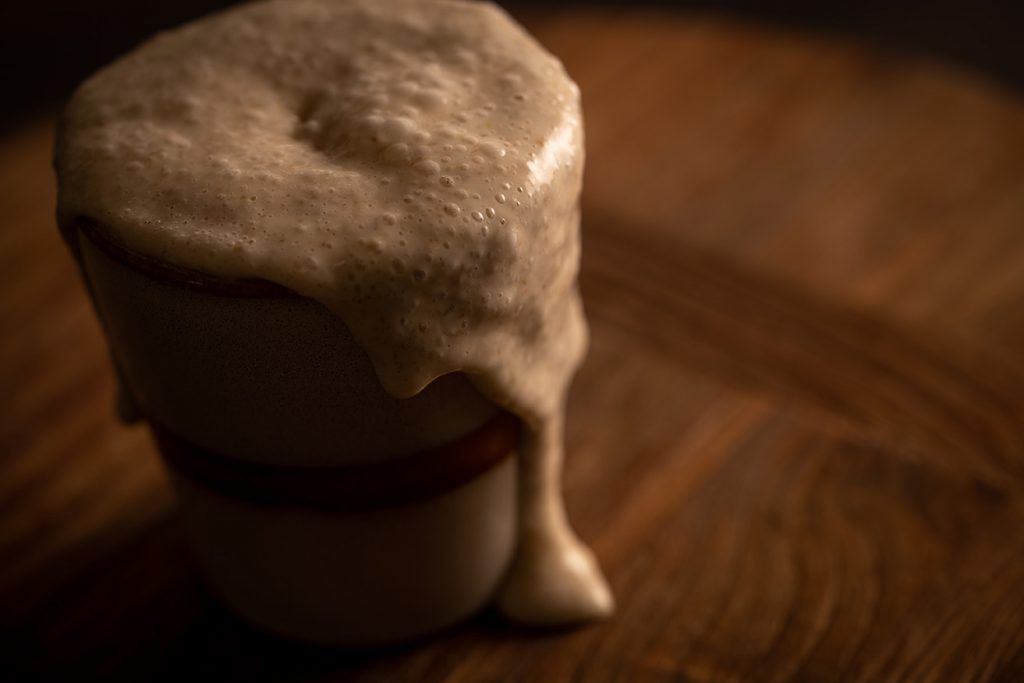Whether you grew your own starter from scratch or received one from a friend, your starter will need to be maintained, that is fed. Over time, you will learn to adjust your feeding schedule to best suit your needs, but if you are relatively new at this, we suggest a feeding option in 1: 3: 3 ratios, that is:
- 1 part starter: 3 parts water: 3 parts flour
Examples
- 10 g starter + 30 g water + 30 g flour
- 5 g starter + 15 g water + 15 g flour
- 20 g starter + 60 g water + 60 g flour.
You can always adjust the quantities. E.g. if you plan on making bread and your recipe requires 150 g of starter, then you can feed it as follows
- 30 g starter + 90 g water + 90 g flour
You will then have 150 g of starter to use for bread, and some spare starter to be fed.
Be careful, and never use all your starter for breadmaking! This means that you will have to start over to make another starter from scratch! Always retain as little as 10 grams of starter culture and continue feeding it.

The feeding schedule depends a lot on where you keep your starter
- If you keep it at room temperature, it should be fed at least every 12 hours. This will be an active starter, ready for bread, but it has the disadvantage that you will have a lot of discard on your hands.
- If you keep the starter in the fridge (if you rarely make bread), it can be fed and put in the fridge immediately after feeding for 7-10 days. However, when you do intend to make bread, you will have to feed the starter 1-2 times once every 12 hours (and leave it at room temperature) before actually moving on to making bread. We do not recommend keeping your starter in the fridge when it is less than one moth old, your starter needs some time to stabilize and you need time to learn about it before moving on to this step. Therefore, in the first month, keep the starter at room temperature and feed it once every 12 hours.

